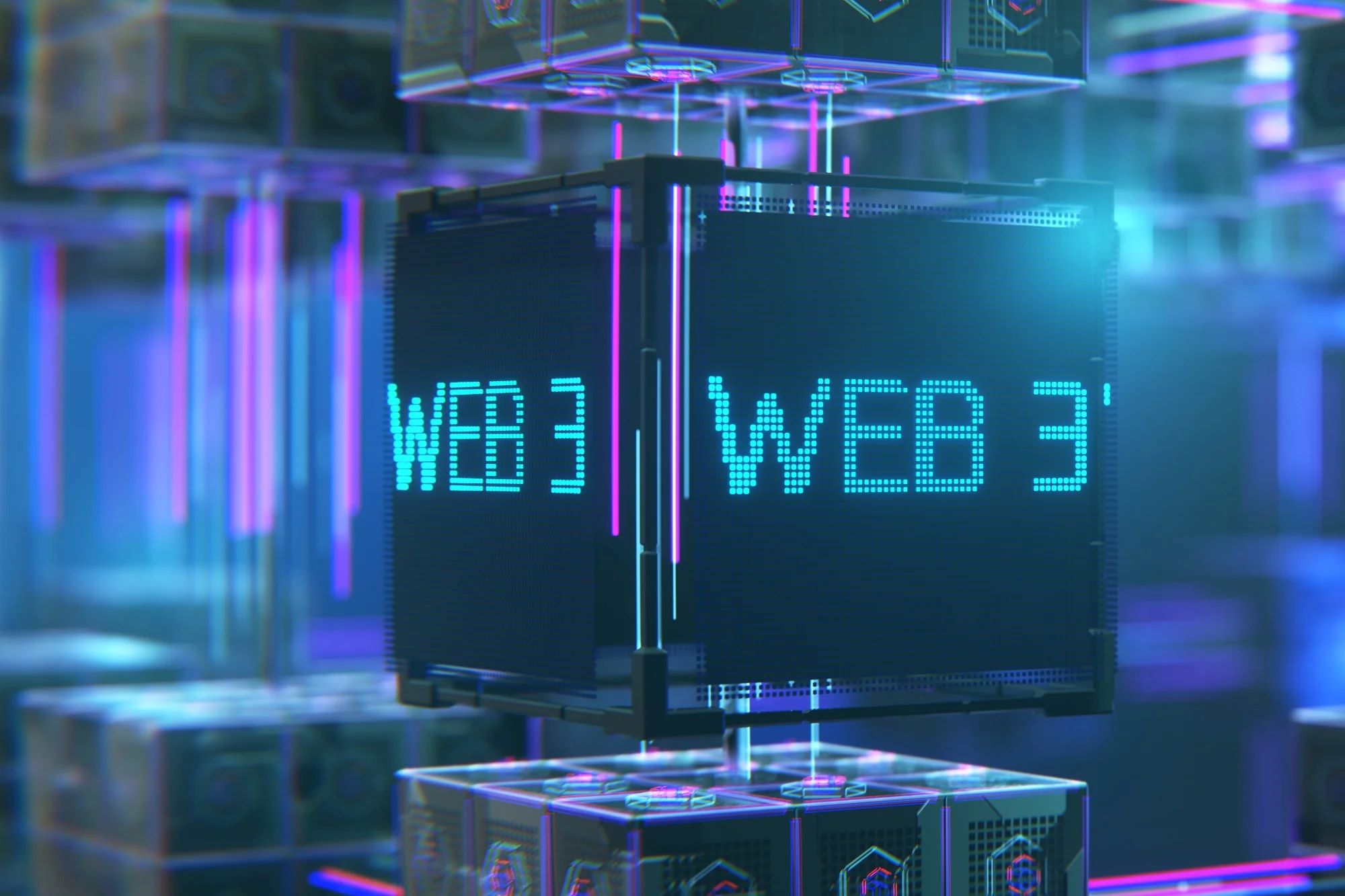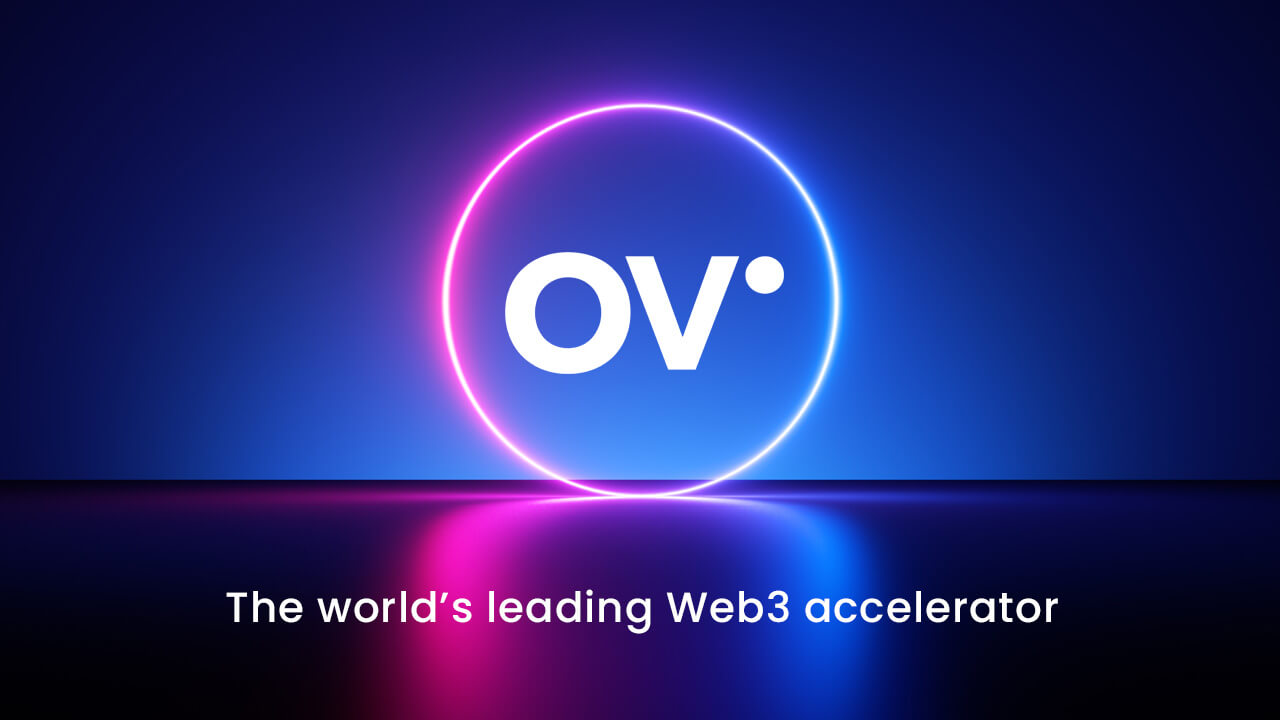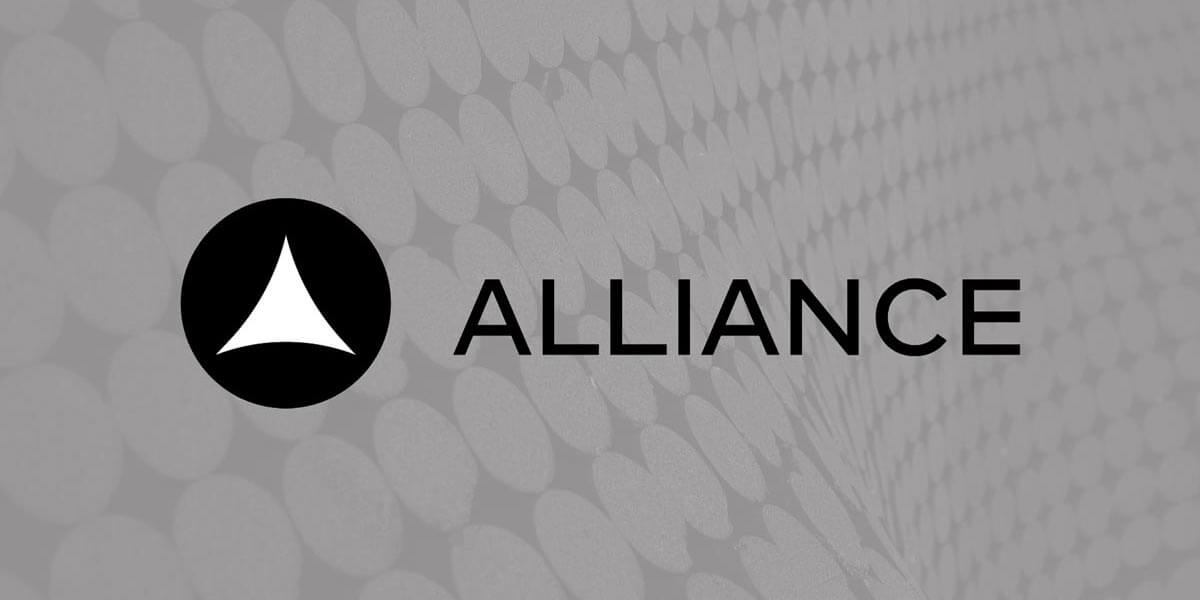Introduction
Welcome to the world of WEB3 Crypto, a revolutionary technology that is transforming the way we interact with the internet and paving the way for a decentralized and secure digital ecosystem. In an era dominated by centralization, WEB3 Crypto offers a breath of fresh air by providing users with greater control over their data and enabling seamless peer-to-peer transactions.
WEB3 Crypto, also known as Web 3.0, is the next generation of the internet, characterized by decentralized applications (dApps) and blockchain technology. Unlike its predecessor, WEB2, which is primarily focused on centralized platforms and services, WEB3 Crypto empowers individuals to regain ownership of their data and participate in a more open and transparent online environment.
The foundation of WEB3 Crypto lies in blockchain technology, which ensures the immutability and security of transactions. This decentralized and distributed ledger eliminates the need for intermediaries, such as financial institutions or online platforms, resulting in lower fees, faster transactions, and reduced risk of fraud.
One of the key features of WEB3 Crypto is the use of smart contracts. These self-executing contracts automatically enforce the terms and conditions of an agreement, eliminating the need for intermediaries and streamlining the process. Smart contracts have the potential to revolutionize various industries, including finance, supply chain management, and real estate.
Moreover, WEB3 Crypto offers enhanced privacy and security. Traditional web platforms are vulnerable to hacking and data breaches, putting users’ personal information at risk. With WEB3 Crypto, data is stored on a decentralized network, making it significantly more secure. Additionally, users have control over their data and can choose what information they want to share, providing them with greater privacy and autonomy.
Furthermore, WEB3 Crypto promotes inclusivity and accessibility. Traditional financial systems often exclude individuals who lack access to banking services or live in unstable economies. With WEB3 Crypto, anyone with an internet connection can participate in global financial transactions without the need for a traditional bank account. This opens up tremendous opportunities for financial inclusion and economic empowerment.
As we delve deeper into the world of WEB3 Crypto, we will explore its benefits, the key differences between WEB3 and WEB2, and the various use cases that are leveraging this transformative technology. However, it is also important to acknowledge the challenges that come with WEB3 Crypto, from scalability issues to regulatory concerns. Nevertheless, the potential impact of WEB3 Crypto is undeniable, and it is poised to revolutionize the internet and redefine how we interact with digital systems.
What is WEB3 Crypto?
WEB3 Crypto, also known as Web 3.0, is a paradigm shift in internet technology that aims to provide a more decentralized, secure, and user-centric online experience. It represents the next evolution of the internet, moving away from the centralized control and data ownership of WEB2 towards a more open, transparent, and user-controlled digital ecosystem.
At its core, WEB3 Crypto leverages blockchain technology to enable peer-to-peer interactions and transactions without the need for intermediaries. Blockchain, a distributed ledger technology, ensures transparency, immutability, and security. It records and verifies transactions, removing the need for trust in a centralized authority.
Within the WEB3 Crypto ecosystem, users have full control over their data. Unlike WEB2 platforms, where users often surrender their personal information for access to services, WEB3 Crypto allows individuals to own and manage their data. This shift in data ownership redefines user privacy and gives individuals the power to choose how their data is used and shared.
WEB3 Crypto is also driven by the use of smart contracts. These self-executing contracts automatically enforce the terms and conditions of an agreement, eliminating the need for intermediaries and ensuring trustless interaction. Smart contracts enable secure and transparent transactions across various sectors, including finance, supply chain management, and decentralized applications (dApps).
Furthermore, WEB3 Crypto embraces the concept of decentralized applications (dApps). Unlike traditional applications that are built on centralized servers and controlled by a single entity, dApps run on a decentralized network of computers, ensuring equal access and reducing the risk of censorship and downtime. These dApps are often built on blockchain platforms like Ethereum and offer a wide range of functionalities, from decentralized finance (DeFi) to decentralized social networks.
Overall, WEB3 Crypto is part of a broader movement towards a more democratic and user-centric internet. It aims to give individuals greater control over their digital experiences, data, and finances. By leveraging blockchain technology and decentralized networks, WEB3 Crypto is transforming the way we transact, communicate, and interact with digital systems. As this technology continues to evolve, it holds immense potential to disrupt traditional industries, foster innovation, and empower individuals worldwide.
Benefits of WEB3 Crypto
WEB3 Crypto brings numerous benefits to users, businesses, and society as a whole. By embracing decentralization, blockchain technology, and user empowerment, WEB3 Crypto revolutionizes the way we interact with the internet and offers several advantages over traditional WEB2 platforms. Let’s explore some of the key benefits of WEB3 Crypto:
- Increased Data Ownership and Privacy: WEB3 Crypto enables users to regain control over their data. Unlike WEB2 platforms that often collect and monetize user data, WEB3 Crypto allows individuals to own, manage, and monetize their own data. Users have the power to choose what information they want to share and can ensure their privacy is protected.
- Enhanced Security: Traditional web platforms are susceptible to hacking and data breaches. WEB3 Crypto mitigates these risks by utilizing advanced cryptographic techniques and decentralized storage. The immutability of blockchain technology adds an extra layer of security, making it extremely difficult for malicious actors to tamper with data.
- Lower Transaction Fees: WEB3 Crypto reduces the reliance on intermediaries in financial transactions. By removing the need for banks or other financial institutions, users can enjoy lower transaction fees and faster settlement times. This is especially beneficial for cross-border transactions, as it eliminates the need for costly intermediaries and lengthy processing times.
- Empowered Digital Economy: WEB3 Crypto opens up new opportunities for participation in the digital economy. With decentralized finance (DeFi) platforms, individuals can access financial services, such as lending, borrowing, and earning interest, without relying on traditional banks. This empowers individuals who are unbanked or underbanked to take control of their finances and participate in the global economy.
- Transparent and Trustless Systems: WEB3 Crypto leverages blockchain technology to create transparent and trustless systems. By recording transactions on a public ledger, anyone can verify the authenticity and integrity of the data. This transparency reduces the need for trust in centralized authorities and fosters a level playing field for all participants.
- Global Accessibility: Unlike traditional financial systems that require participants to have access to banking services, WEB3 Crypto is accessible to anyone with an internet connection. This inclusivity opens up opportunities for financial inclusion, especially in underserved regions and developing countries, where traditional banking services may be limited.
These are just a few examples of the benefits that WEB3 Crypto brings to the table. As this technology continues to evolve, it holds the potential to reshape industries, empower individuals, and create a more equitable and decentralized digital ecosystem.
The Difference Between WEB3 and WEB2
WEB3 and WEB2 represent two distinct generations of internet technology, each with its own characteristics and implications for users and businesses. Understanding the differences between WEB3 and WEB2 is key to grasping the transformative potential of WEB3 Crypto. Let’s explore the main differentiating factors:
- Centralization vs. Decentralization: The fundamental difference between WEB2 and WEB3 lies in the degree of centralization. WEB2 platforms are typically centralized, meaning that data, control, and decision-making are concentrated in the hands of a few entities. In contrast, WEB3 is decentralized, leveraging blockchain technology and peer-to-peer networks to distribute power and control among its users.
- Data Ownership and Privacy: In WEB2, users often surrender their personal information to access online services. This data is usually collected and controlled by the platform, which can monetize it or make decisions about its use. WEB3, on the other hand, prioritizes user ownership and control of data. Users have the ability to own, manage, and monetize their own data, ensuring greater privacy and autonomy.
- Intermediaries and Trust: WEB2 platforms rely on intermediaries to facilitate transactions and ensure trust between users. These intermediaries include banks, social media platforms, and e-commerce sites. In WEB3, smart contracts and blockchain technology eliminate the need for intermediaries. Transactions are enforced automatically and trustlessly, reducing the reliance on centralized authorities.
- Transparency and Trustlessness: WEB2 platforms often lack transparency, as users have limited visibility into how their data is being used or manipulated. In WEB3, transparency is inherent in its decentralized nature. Blockchain technology ensures that transactions are transparent, and the immutability of the blockchain allows for trustless verification of data.
- Innovation and Customization: WEB2 platforms are typically owned and operated by a single entity, limiting innovation and customization. In WEB3, decentralized applications (dApps) thrive, offering endless possibilities for developers to create innovative solutions. Since dApps are built on open protocols, anyone can contribute to their development and customize them to suit their individual needs.
- Financial Inclusion and Accessibility: WEB2 platforms often require users to have access to traditional banking services, which can exclude individuals in underserved regions or developing countries. WEB3 Crypto promotes financial inclusion by enabling individuals to access financial services without relying on intermediaries or traditional banking infrastructure. This global accessibility opens up opportunities for economic empowerment.
These key differences highlight the transformative potential of WEB3 Crypto. By shifting the power dynamics away from centralized platforms towards decentralized networks, WEB3 aims to create a more equitable, transparent, and user-centric digital ecosystem.
Exploring Use Cases of WEB3 Crypto
WEB3 Crypto presents numerous use cases across various industries, demonstrating the versatility and potential impact of this revolutionary technology. Let’s explore some of the most notable use cases of WEB3 Crypto:
- Decentralized Finance (DeFi): DeFi represents one of the most prominent use cases of WEB3 Crypto. It leverages blockchain technology to create an open and permissionless financial ecosystem, offering a wide range of financial services such as lending, borrowing, yield farming, and decentralized exchanges. DeFi eliminates the need for intermediaries, provides greater financial accessibility and transparency, and offers individuals opportunities to participate in the global financial system.
- Supply Chain Management: Supply chain management is another area where WEB3 Crypto can significantly improve transparency, efficiency, and trust. By leveraging blockchain’s immutable and transparent nature, supply chain participants can track and verify the movement of goods, ensuring authenticity, reducing fraud, and enhancing traceability. Smart contracts can automate contract execution and payment settlement, reducing administrative costs and ensuring greater trust between stakeholders.
- Decentralized Social Networks: WEB3 Crypto enables the development of decentralized social networks that address concerns around data privacy, censorship, and control. These networks prioritize user ownership of data and allow users to have more control over their content, interactions, and privacy settings. Decentralized social networks aim to create a more democratic and user-centric online social experience.
- Digital Identity Management: WEB3 Crypto offers a solution to the challenges associated with digital identity management. It enables individuals to have ownership and control over their digital identities, reducing the risk of identity theft and enhancing privacy. With WEB3 Crypto, users can selectively share their identity attributes, granting access to specific information without revealing unnecessary personal data.
- Art and Intellectual Property: The art and intellectual property industries are ripe for disruption by WEB3 Crypto. Blockchain technology provides a means of establishing provenance and ownership of digital assets, addressing issues of copyright infringement and enabling creators to receive fair compensation for their work. Smart contracts can automate royalty payments, ensuring that artists and creators receive a fair share of the value their creations generate.
- Gaming and Virtual Realities: WEB3 Crypto has the potential to transform the gaming and virtual reality (VR) industries by introducing decentralized ownership of in-game assets and virtual real estate. Through blockchain technology, players can truly own their digital items, trade them freely, and have provable scarcity. This opens up opportunities for new revenue models, collaborative ecosystems, and cross-platform gameplay.
These use cases represent just a glimpse of the possibilities that WEB3 Crypto offers. With its emphasis on decentralization, transparency, and user empowerment, WEB3 Crypto is poised to disrupt traditional industries, foster innovation, and reshape the way we interact with digital systems.
Challenges of WEB3 Crypto
While WEB3 Crypto has immense potential to revolutionize industries and empower individuals, it is not without its challenges. As this transformative technology continues to evolve, several hurdles must be overcome to fully realize its benefits. Let’s explore some of the key challenges of WEB3 Crypto:
- Scalability: Scalability remains a significant challenge for WEB3 Crypto. As more users and transactions are added to decentralized networks, the scalability of blockchain protocols becomes a concern. The current throughput of many blockchain networks is limited, leading to slower transaction times and higher fees. Addressing scalability issues is crucial for WEB3 Crypto to achieve mainstream adoption.
- User Experience: One of the barriers to widespread adoption of WEB3 Crypto is the user experience. The current user interfaces are often complex and require a certain level of technical expertise to navigate. Improving the user experience, making it more intuitive and accessible to the average user, is essential to onboard mainstream users into the WEB3 Crypto ecosystem.
- Regulatory Uncertainty: WEB3 Crypto operates in a regulatory gray area in many jurisdictions. The decentralized nature of WEB3 Crypto challenges traditional regulatory frameworks, leaving governments grappling with how to classify and regulate the technology. The lack of clear and consistent regulations can deter businesses and inhibit growth in the industry. Achieving regulatory clarity is essential to foster trust and attract institutional players.
- Energy Consumption: Several blockchain networks, such as Bitcoin and Ethereum, require significant energy consumption for consensus mechanisms like proof-of-work. The energy consumption associated with mining and validating transactions has raised concerns about the environmental impact of WEB3 Crypto. Finding sustainable alternatives and transitioning to more energy-efficient consensus algorithms is necessary to mitigate the environmental footprint.
- Interoperability: Interoperability between different blockchain networks and protocols remains a challenge in the WEB3 Crypto space. The lack of standardization and communication channels between different platforms limits the seamless exchange of data and value. To unleash the full potential of WEB3 Crypto, interoperability protocols and standards need to be developed to enable frictionless interaction between different blockchain networks.
- Ethical and Governance Issues: With the rise of decentralized autonomous organizations (DAOs), which operate based on smart contracts and decentralized governance, new ethical and governance challenges arise. Determining decision-making processes, preventing malicious actions, and compromising situations will be critical in ensuring the integrity and trustworthiness of decentralized systems.
Addressing these challenges requires collaboration, innovation, and continuous development within the WEB3 Crypto community. As the technology matures, efforts to improve scalability, enhance user experience, establish regulatory frameworks, promote sustainability, foster interoperability, and address ethical and governance concerns will be crucial to unlocking the full potential of WEB3 Crypto.
Conclusion
WEB3 Crypto, the next generation of internet technology, holds tremendous promise for revolutionizing the digital landscape. By leveraging decentralization, blockchain technology, and user empowerment, WEB3 Crypto brings numerous benefits to users, businesses, and society as a whole.
With WEB3 Crypto, individuals can regain control over their data, ensuring greater privacy, security, and ownership. The use of smart contracts and blockchain technology eliminates the need for intermediaries, reducing transaction costs, enhancing transparency, and fostering trustless interactions.
Exploring the use cases of WEB3 Crypto reveals its potential to transform various industries. From decentralizing finance and supply chain management to revolutionizing social networks and digital identity management, WEB3 Crypto opens up new possibilities for innovation, inclusion, and empowerment.
However, as with any emerging technology, WEB3 Crypto faces challenges that must be overcome. Scalability, user experience, regulatory uncertainty, energy consumption, interoperability, and ethical and governance issues pose hurdles that require continuous development and collaboration within the WEB3 Crypto community.
Despite these challenges, the potential impact of WEB3 Crypto is undeniable. It has the power to reshape industries, empower individuals, and create a more decentralized, transparent, and user-centric digital ecosystem.
As WEB3 Crypto continues to evolve, addressing these challenges and building upon its strengths will be essential to drive mainstream adoption and unlock its full potential. By embracing the principles of decentralization, privacy, and user control, WEB3 Crypto has the potential to transform the way we interact with the internet and create a more democratic and inclusive digital future.

























